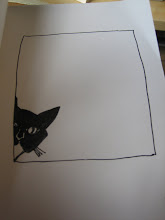I've been meaning to visit Seacity in my hometown of Southampton since it opened but as is often the case with these things, it was only the arrival of family from India this month which actually prompted my visit. In the two years since it opened, the "Gateway to the World" gallery has become British-Museum vast in my imagination, so excited was I, avid researcher of lascars, at the possibilities the exhibit might hold. Southampton, the city that the P&O sailed eastwards from since the 1840s, always cropped up in my archive searches for lascar material (a future research project is brewing away there) but I have never had time to explore further into the entwined histories of migration and maritime labour that characterise Southampton as a city. "Gateway to the World", well it sent a thrill through me when I first read of it.
I've come away with mixed feelings. I'm surprised at how moving and engaging the Titanic Gallery was, as someone who's always refused to watch The Film and who's always been a little bemused by the fanaticism the historical event inspires in some. But the Seacity's take on was to read the Titanic tragedy through the lives of the local Southampton people who worked on it and on how the city was impacted so profoundly by the tragedy. One exceptionally moving feature was a large map of Southampton that spread below our feet, on which all the Southampton lives lost were marked with dots. So many dots, from my old house in Inner Avenue, to the Shirley fields then on the outskirts of the city, and beyond. The scale of the ship - so hard to comprehend - told through cutlery and food stores. And I loved that we saw the second class berths - which looked tiny - rather than the exaggerated opulence of the first.
But I did speed through the Titanic galleries, impatient to get to the Gateway of the World. With such anticipation, it was always going to disappoint. My favourite element of the "Gateway" theme ended up being the map of the naval routes that papers the walls outside the exhibit. As bits of this map are folded over cornices and the like, a full flat version - or even a large globe - would have been wonderful at the beginning of the exhibit.
Instead, the two and half room exhibit features a chaotic mixture of stories of travels to and through Southampton - Roman, military, medieval and some more recent. No direct mention of the P&O, and not, alas, a single picture or account of lascars working the Southampton ships.
I found the way in which Southampton's twentieth century diasporas have been represented in the exhibition most problematic. These little boxes of migrant history are possibly the worst way to render the rich and diverse multiculture that makes up Southampton, segregating each separate ethnic community in space and time. There's no suggestion of intersections between kinds of identity or of the experience of communities living together, of the city's annual interfaith peace walk, for example, or of the kind of neighbourly activism that has given television producers such a hard time recently when they tried to make an inflammatory ant-immigration documentary in the city. Or the fact that many of the ethnic communities featured have links to Southampton that date back further than the assigned "decade"on the box. The boxes - so slight and stereotyped in their content, so tokenistic in approach, made me feel quite sad.
But it's a young museum at just two years old, and I understand that the larger portion of space has to be devoted to the city's Titanic story for pragmatic reasons alone. The space is visually exciting, and makes what could seem dull - maritime history - seem both lived and living. It's great to have such a modern, vibrant celebration of the city at the heart of it's developing new "cultural quarter". So whilst I wasn't entirely satisfied by my trip, I can also see Seacity gradually evolving, remaking itself, much like Southampton continues to do.



